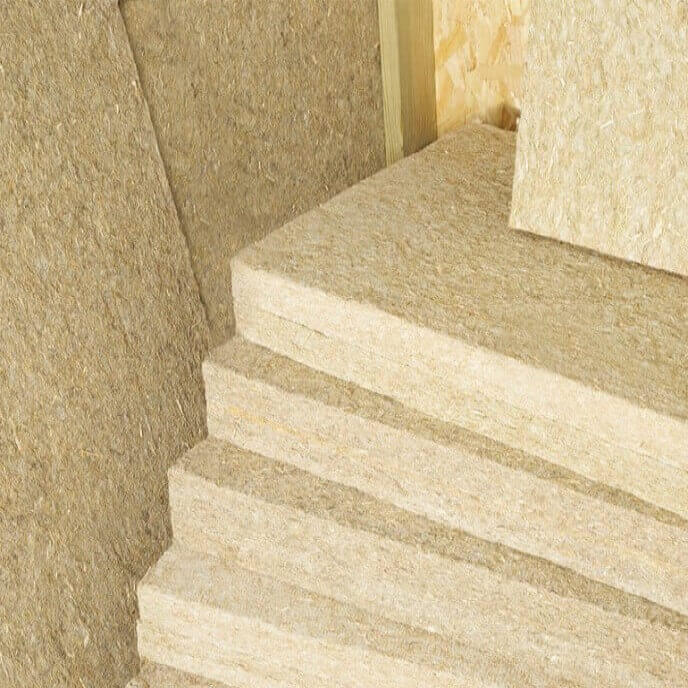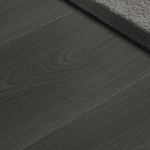Blog
Best Underlay For Stairs

Best Underlay For Stairs
Your stairs are one of the heaviest foot traffic areas of your home, and ensuring you have extra protection in the form of an underlay is the best way to ensure the look and feel of both your flooring and your stairs. But what is the best underlay for stairs?
In this article, we will narrow down your underlay choice, breaking down factors like tog rating, thickness, noise reduction, and overall material quality to ensure you can make an informed decision.
What makes the best underlay for stairs?
The following are factors that make an underlay for stairs ideal.
Density
Density and thickness are often confused with one another, but they both serve different functions. Thickness makes up the measurement of the width and is often associated with how cushioned the underlay is, whereas density is all about durability. A high-density underlay for stairs will boast heavy resistance against the wear and tear that often comes with stair use.
Many types of underlay boast high density. Many who shop with QA often look for a carpet underlay for their stairs, as carpet is one of the more popular choices for stairs. One of the biggest examples of an appropriate, high-density carpet underlay is our top-of-the-range rubber carpet underlay. Rubber is made up of recycled rubber tiles, providing the highest foot traffic protection and general support for carpeted stairs.
Comfort
It’s important to point out one fact above all – the optimum thickness for your stairs underlay will always be 9-10mm. Anything thicker can be hard to fit, not to mention uneven/unsafe. Aside from that, though, comfort underfoot is one of the most sought-after pros of an underlay regardless of where it’s placed.
When you want a comfortable underlay, you’re usually asking for a thicker underlay. Considering that going above the aforementioned range is difficult (though doable), we recommend taking a look at underlays that boast comfortable material vs others in the 9-10mm range. For stairs, we have a few different options but we would recommend you look to our top-of-the-range foam carpet underlay – Floorsure Gold 10mm. This is the thickest underlay for stairs you could ask for within safety recommendations, whilst also being the most comfortable, and it’s much easier to handle than sponge rubber underlay, so makes for an easier installation, too.
Noise Reduction
Stairs, on account of the concentrated weight being pressed on them, can sometimes be noisy. This leads a lot of our clients to opt for an underlay that boasts high levels of sound reduction. PU foam and crumb rubber underlay both excel at this, as well as combination underlays (rubber and felt underlay combined).
Nonetheless, if you go for both thickness and high density, you will get an underlay that excels at reducing noise by extension.
Stair and underlay material combo
The following section will revolve around the best underlayment and stair combos.
Sponge Rubber Underlay
Sponge rubber offers high endurance and lasts for a long while. They are best used for:
- Wooden stairs – Wooden stairs, on top of being hard like most stairs, also run the problem of being hollow. The creaking only gets worse the more wooden stairs wear, which they are prone to over time.
- Tiled, concrete or stone stairs – These types of stairs are fully solid and durable. This means the condition of these stairs will typically be good regardless of how you treat them. That being said, these stairs are often uncomfortable on bare feet.
Whilst QA doesn’t offer sponge rubber underlays, we have a full range of other underlays for you to explore, some of which we’ll cover below.
Foam Underlay
- Carpeted Stairs – Carpeted stairs are nice, soft and comfortable. But without any support, that comfort will soon fade, as the plush fibres of the carpet become worn and flattened by foot traffic, especially in the case of thinner carpets.
- Laminate Stairs – LVT or Laminate stairs have two major weaknesses. For one, whilst they can look great, they’re very noisy. The material has next to no sound absorption qualities, meaning the full noise of footsteps will be emitted from foot traffic. It can also be cold, having next to no ability to retain heat. This can be improved by choosing a product with a built-in underlayment.
PE Foam Underlays are a good fit for laminate floors, engineered wood or floating floor installations. PE Foam has great noise absorption qualities, with the closed-cell structure allowing the capture of sound waves inside the structure itself. On top of this, PE Foam Underlays can offer layers of thermal insulation. It will make the stairs feel a lot warmer, as well as not allowing heat to be lost through the material.
Combination Underlays
Combination underlays are a composite mix of several different materials. Calculating how much underlay is needed for your stairs, then, requires some knowledge of the specific material makeup of the underlay in question. Usually, these materials are rubber and foam, though sometimes also felt. They offer different benefits because of their unique material makeup.
QA’s CombiFelt Acoustic underlay made of extra-tough felt and rubber, is a good fit for loud, creaky stairs, for example, because the rubber’s density helps absorb sound and won’t crumble over time, whilst the felt provides the firm but plush feel you’re looking for.
Mixed Material Stairs
These stairs, made up of several materials, will often come with unique challenges. Whether noisy, low durability or just outright uncomfortable, you may find that the unique challenge is solved by a combination underlay, which makes up the best of several underlay factors.
High Traffic Stairs
Stairs that are frequently used by people face the danger of progressive wear and tear. This means that the stairs are in demand of an underlay that is high in density and has great compression recovery. On top of that, it needs to be an underlay that is also fairly comfortable.
Considering this, it’s best to have a combination underlay, one that can make the journey up the stairs that much more comfortable, whilst also being highly stable, such as QA’s CombiFelt Acoustic.
Best Carpet Underlay For Stairs Conclusion
We hope this helps you with your journey to understanding and making an informed decision on the type of underlayment you may want for your stairs. Why not look at our full range and use our Traffilay product finder to see if there’s an underlayment that’s better suited to your needs?

